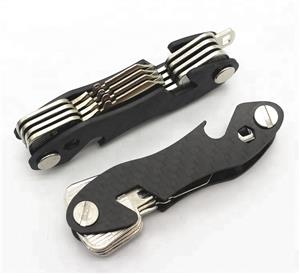Spoiler alert: I learned something when researching this article.
We all love our gadgets. Solid Signal’s daily deals page is full of them. A gadget, roughly defined, is a thing that no one really needs but everyone wants. It’s a little thing that makes life better solely through being a clever solution to a problem.
Is a cell phone a gadget?
The essential quality of “gadgetness,” I would say, is that a gadget is not a necessity. It’s a bonus, an extra. It’s something that’s craveable once we have our basic needs met. So I would not call a phone or a TV a gadget. I wouldn’t call a router a gadget. These are things you need to get through a modern day. No, they aren’t as critical as food or oxygen but they are pretty important.
Another thing about “gadgetness” is that a gadget does something. Gadgets either have moving parts or some sort of robotic or computerized response. A gadget doesn’t sit on the shelf, it’s not an objet d’art. A gadget is generally small, too. You don’t think of a hydroelectric power plant as a gadget. A gadget is often pocketable, or at the very least small enough to be a part of something larger.
On the other hand, I’d call something like our “KeyClip” key holder a gadget. It’s a clever turn on your normal key ring.
So the word gadget….
Prior to researching this article I had been pretty clear that the word “gadget” reached wide use around the end of the 19th century. People were pretty fond of the Statue of Liberty back then, it being new and all. A company called Gaget, Gauthier & Cie made small replicas of the statue to sell as souvenirs. I had believed this was the origin of the word. It had always bothered me that the original “gadgets” didn’t actually do anything, but I supposed that secondary definition came later.
Wikipedia and other sources disagree with the definition. They cite the Corning Museum of Glass, who state that the term was in use 100 years earlier by glassmakers. This first “gadget” held a piece of glass in place using a spring. Apparently the term “gadget” was also common enough in 1886, the year the Statue of Liberty hit shores, that it was used in the Robert Brown book Spunyarn and Spindrift, A sailor boy’s log of a voyage out and home in a China tea-clipper. In this book a “gadget” is something the name of which you cannot remember. Today we would use a word like “thingamabob” or “whoozywhatzit” for this purpose.
Finally, there are those who remind us that the French word gagée means a small tool.
The theory that makes the most sense…
is the “all of the above” theory. It’s quite possible this was an obscure glassmaking term first, and then gained some currency in nautical circles, possibly independently. The prominently stamped word “GAGET” at the bottom of Statue of Liberty souvenirs reminded some of the previously known word and it began to grow like a 19th-century meme. In a time where new inventions and innovations were coming almost daily, people needed a word for a new, craveable luxury item. “Gadget” fit the bill.
Today, our world is full of gadgets, so much so that the word is probably used less now than it was. Consumer electronics have dominated the marketplace now for so long that we wouldn’t even know how to live without them. Luckily you don’t have to, and you can get the best gadgets at Solid Signal.





